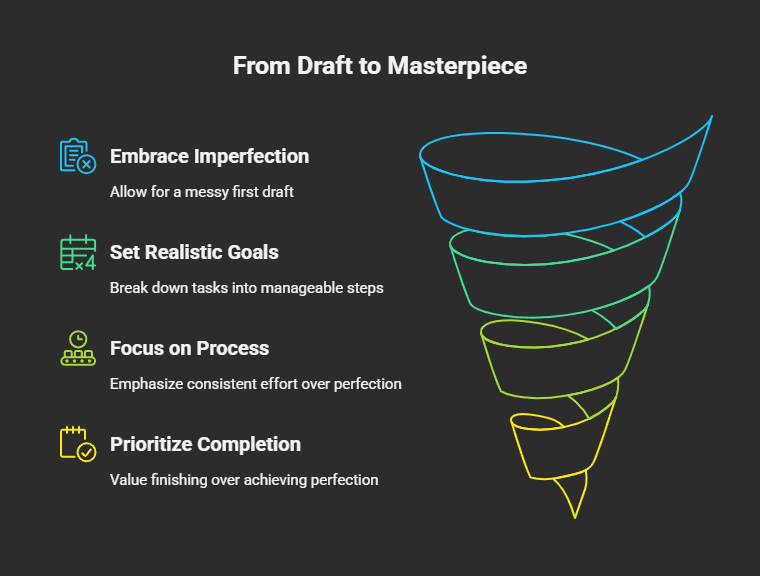Let’s be real for a second. Procrastination isn’t just a quirky habit. It’s not about being “lazy,” a word that gets thrown around way too easily, if you ask me. No, procrastination is a complex, surprisingly nuanced part of the human experience. It’s that little gremlin in your brain that whispers, “Later. You can do that later,” while you find yourself inexplicably deep-cleaning the grout in your bathroom with a toothbrush instead of, you know, filing your taxes.
We’ve all been there. Staring at a blank page, a full inbox, or a project that feels like trying to eat an elephant in one sitting. But here’s the thing: not all procrastination is created equal. The reasons why you put things off can be vastly different from those of your friend. It’s like a personality quirk, a signature style of delay.
And believe it or not, figuring out your specific brand of procrastination is the first giant leap toward getting a handle on it. It’s about understanding the why behind the “what the heck am I doing right now.” Once you crack that code? Everything starts to change.
So, let’s spill the beans and take a look at some of the most common types of procrastinators. See if you recognize yourself in any of these. Don’t worry, there’s no judgment here, only answers… and a way out.
The Perfectionist: “If I Can’t Do It Flawlessly, I Won’t Do It At All.”
Ah, the Perfectionist. You, my friend, are a connoisseur of quality. An artist. Your standards are stratospherically high, which sounds like a good thing, right? And it can be! But here’s the kicker: your fear of not meeting those impossibly high standards can be utterly paralyzing.
You’re not just putting off a task; you’re avoiding the potential for imperfection. The very thought of turning in something that’s merely “good” instead of “breathtakingly brilliant” makes your skin crawl. So, you research. And you plan. And you outline. You might even spend hours choosing the perfect font for a one-page report. Anything to delay the actual doing of the thing, because once you start, you have to confront the terrifying possibility that it might not be… well, perfect.
It’s a vicious cycle. The longer you wait, the more pressure builds. And the more pressure builds, the more perfect the final product has to be. It’s a self-made prison of excellence.
(Sound familiar? Here’s your escape hatch.)

Funny thing is, the way out for the Perfectionist isn’t to lower your standards, not really. It’s to redefine what “done” looks like.
- Embrace the “Good Enough” Draft: Permit yourself to create a truly terrible first draft. A “vomit draft,” as some writers call it. Just get it all out. The goal isn’t quality; it’s completion. You can always, always, go back and polish it later. The magic is in the editing, not the initial flawless creation.
- Set Realistic Goals (and Timelines): Instead of “write the entire novel,” how about “write 200 words today”? Breaking down that monumental task into bite-sized, manageable chunks makes it feel less like you’re scaling Everest in your slippers.
- Focus on Process, Not Just Outcome: Shift your focus from the final, gleaming product to the simple act of showing up and putting in the time. Celebrate the fact that you worked on it for 30 minutes, regardless of the output. That consistency is what truly builds masterpieces.
- Done is Better Than Perfect: This needs to be your mantra. Say it. Write it on a sticky note and put it on your monitor. Tattoo it on your forehead (okay, maybe not that). But internalize it. A completed project that’s 80% perfect is infinitely better than a 100% perfect project that only exists in your head.
The Overwhelmed: “There’s So Much To Do, I Don’t Even Know Where to Start.”
If you’re the overwhelmed procrastinator, your to-do list isn’t just a list; it’s a monster. It looms over you, a dense, tangled forest of tasks, each one screaming for your attention. Looking at it doesn’t inspire action, it inspires a strong desire to take a nap.
This isn’t about one specific, scary task. It’s about the sheer volume of it all. The avalanche of emails, the multi-stage project, and the looming deadlines all converge at once. Your brain, in a very real act of self-preservation, just… shuts down. It’s a total system overload. So, you retreat to the safety of simple, non-threatening activities. Suddenly, organizing your spice rack alphabetically feels like the most urgent and important job in the world.
It’s not laziness; it’s paralysis. You’re a deer in the headlights of your productivity.
(And here’s how to get moving again.)
The key for the Overwhelmed is to untangle the mess. To turn that roaring monster back into a series of manageable pets.
- The Two-Minute Rule: This one’s a game-changer. If a task takes less than two minutes to complete, do it immediately. Don’t write it down. Don’t think about it. Just do it. Answering that one email, making that quick phone call, putting that dish in the dishwasher, it starts to clear the clutter, mentally and physically.
- Break It Down. No, Smaller: You’ve heard “break it down into smaller tasks” before. I’m telling you to take it a step further. Break it down until the next action is so ridiculously small and easy, it feels almost silly not to do it. “Write a report” becomes “Open a new Word document.” Then “Write a headline.” Then “Write the first sentence.” You get the idea. Build momentum with tiny, undeniable wins.
- Pick One Thing: Stare at your monstrous to-do list and pick one. Just one. It doesn’t even have to be the most important one. Just the one you feel you can tackle right now. By the time you’ve finished that single task, after you’ve given yourself that little jolt of accomplishment, the room will feel a little brighter.
- Eat the Frog: This is the opposite approach, but it works wonders for some. Identify the one task you are dreading the most (the “frog”) and do it first thing in the morning. Get it over with. The rest of your day will feel like a cakewalk in comparison. Who doesn’t love a good surprise like that?
The Dreamer: “I Have This Amazing Idea… I’ll Start on It… Someday.”
The Dreamer lives in a beautiful world of possibilities. Your mind is a whirlwind of brilliant ideas, grand schemes, and epic projects. You’re a visionary! The problem? You’re more in love with the idea of the thing than the actual, nitty-gritty work of making it happen.
You can spend hours, days, even weeks mapping out your future best-selling novel, designing the logo for your world-changing startup, or planning the perfect garden. But when it comes time to roll up your sleeves and do the boring, tedious, and often frustrating work of execution? You kind of… float away.
It’s not that you’re afraid. It’s just that the reality of the work, the spreadsheets, the phone calls, the tedious drafts, can feel like a letdown compared to the glorious, perfect version that exists in your mind. The dream is so much more satisfying than the doing.
(Ready to make those dreams a reality? Try this.)
Dreamers need to build a bridge between their beautiful ideas and the solid ground of reality. It’s all about making it real.
- Turn Dreams into Actionable Steps: Take that grand vision and translate it into a concrete, step-by-step plan. What is the very first physical action you need to take? Is it buying a domain name? Sketching a single wireframe? Planting a single seed? Make it a real-world, tangible task.
- Schedule Your Dreams: Don’t just say, “I’ll work on my business plan this week.” Block out a specific time in your calendar. “Tuesday from 7 PM to 8 PM: Draft the mission statement.” Treat it like a doctor’s appointment you absolutely cannot miss.
- Find an Accountability Partner: This is huge for Dreamers. Share your goal with someone and ask them to check in on your progress. Knowing that someone is going to ask, “Hey, did you finish that chapter?” can be an incredibly powerful motivator to get out of your head and into your work.
- Get Your Hands Dirty, Fast: The longer you stay in the planning phase, the more intimidating the “doing” phase becomes. As soon as you have a basic idea, take one small, messy, imperfect action. It changed everything… because it makes the dream real. And real things can be improved.
The Crisis-Maker (or The Thrill-Seeker): “I Work Best Under Pressure.”
Do you tell yourself that you thrive in the eleventh hour? That the adrenaline rush of a looming deadline is the only thing that can truly focus your mind? If so, you might be a Crisis-Maker.
You see deadlines not as helpful guidelines, but as the starting line. You leave things to the last possible minute, turning every project into a high-stakes, heart-pounding drama. And if I’m honest, there’s a part of you that loves it. The frantic energy, the heroic all-nighter, the miraculous save at the very last second, it’s exciting!
The problem, of course, is that this is an incredibly stressful and unsustainable way to live. The work you produce in a panic is rarely your best. You miss details. You make sloppy mistakes. And the constant cycle of stress and relief takes a toll on your mental and physical health. Plus, let’s be real, it drives your colleagues and loved ones absolutely bonkers.
(Want to get off the rollercoaster? Here’s how.)
For the Crisis-Maker, the solution lies in creating artificial urgency and finding healthier ways to get that buzz of engagement.
- Create Mini-Deadlines: Don’t rely on the final deadline. Break your project into chunks and assign your own, earlier deadlines to each part. And you have to treat these deadlines as sacred. Tell someone about them. Put a reward on the line. Do whatever it takes to make them feel real.
- Use the Pomodoro Technique: This was practically designed for you. Work in focused, 25-minute intervals, followed by a 5-minute break. This creates a sense of mild, manageable pressure and a clear finish line for each sprint. It makes the work feel more like a game and less like a marathon.
- Up the Stakes (Artificially): Challenge yourself. Can you finish this report in two hours instead of the four you’ve mentally allocated? Turn it into a personal competition. The “thrill” comes from beating your clock, not the external one.
- Recognize the True Cost: Take a moment to really think about the consequences of your last-minute habit. The stress, the anxiety, the apologies, the subpar work. Is the momentary thrill worth it? Sometimes, a dose of honest self-reflection is the most powerful motivator of all.
So, Which One Are You?
Maybe you saw yourself clearly in one of these descriptions. Or maybe you’re a bit of a hybrid, a Perfectionist when it comes to your creative work, but overwhelmed by your household chores. That’s normal. We can be different kinds of procrastinators in different areas of our lives.
The real magic isn’t in slapping a label on yourself. It’s in the flash of recognition. That “aha!” moment when you realize, “Oh, that’s why I do that.”
Understanding your procrastination style is like being handed a map to your mind. It shows you the patterns, the pitfalls, and, most importantly, the paths to get unstuck. It’s not about becoming a productivity robot, devoid of all human messiness. It’s about learning how to work with your tendencies, not against them.
So, take a deep breath. Forgive yourself for all the times you’ve put things off. And the next time you find yourself alphabetizing your bookshelf when you should be doing something else, just smile. You know what’s happening. You know your type.
And now, you know what to do about it. Give it a try. What have you got to lose? (Besides the stress, the guilt, and the last-minute panic, of course.)






















